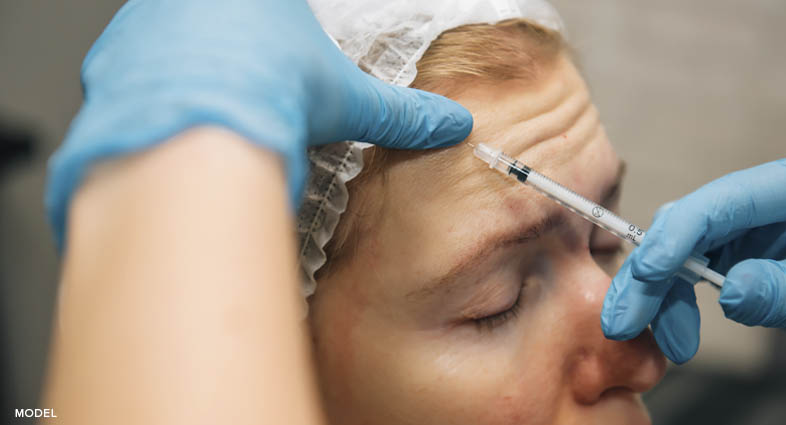There has been a fundamental change in the way younger women evaluate their faces in terms of beauty standards. This change is multifaceted and motivated by several factors. Perhaps the most influential factor, however, is social media, which experts believe is the main reason for the rise in interest in cosmetic procedures among young women as early as their 20s. From the constant barrage of smooth jawlines and chiseled cheekbones found on their Instagram feeds to celebrity plastic surgeons sharing their work on TikTok, social media is constantly spurring the new beauty ideals that women are chasing after.
According to the American Society of Plastic Surgeons, the number of Botox injections has increased over the past two decades, and demand is coming primarily from 20- to 29-year-olds. As facial esthetic treatments have become more popular over the past two years, Botox has emerged as the most in-demand cosmetic procedure.
It has always been an option for women between 30 and 40 to treat fine lines and wrinkles. But this new trend, referred to as Preventative Botox or Baby Botox, refers to the treatment being performed on patients of a younger age at the first sign of wrinkling.
More and more young women are undergoing this treatment, which popularized it among the Gen-Z and millennial market and prompted discussions about its safety and effectiveness and whether the side effects can damage the face, causing patients’ facial expressions to become “frozen” and harder to form.
How Preventative Botox Works
Botox works by blocking signals from the nerves that command the facial muscles to contract, relaxing and softening the wrinkles. By inhibiting the movement of these muscles, Botox prevents wrinkles from forming in the future – hence its “preventative” function.
Because wrinkles are caused by the repetitive movements of the skin, early treatment with Botox can prevent them from forming in the first place, rather than trying to fix them after they have already formed.
Preventative Botox uses smaller treatments and requires regular maintenance over time to achieve more natural results in the long term. And while it’s generally touted as a treatment to reduce wrinkles, early use of Botox can also help with a number of other skin problems, reducing the appearance of pores, improving skin texture, and relieving skin redness in most patients.
When is the best time to start Preventative Botox and how often do you need it?
Most patients begin Preventative Botox at age 25, as this is the time when the first signs of aging, such as crow’s feet, forehead wrinkles, and fine lines, appear.
It is not recommended that patients start earlier than age 25, because their fine lines or wrinkle damage may not yet be enough for Botox to be effective. I tell most of my patients in their early 20s to wait a few more years to have their first Botox treatment, as they are unlikely to have enough wrinkles to worry about earlier than their mid- or late-20s, so earlier treatment would be unnecessary.
Although Preventative Botox uses a conservative amount of injectables each time, facial muscles naturally weaken over time, and overdoing it in a particular area of the face could have undesirable consequences. The effects of Botox tend to last only between three to six months, so the timing of when to get started matters.
What areas can be targeted with Preventative Botox?
Preventative Botox can be used almost anywhere on the face. The most common areas for which I recommend preventive Botox are the eye area, the area between the eyebrows, the skin around the lips and chin, and the entire surface of the forehead.
In addition to treating facial wrinkles, Botox can also be used to treat various other conditions such as:
- Cervical dystonia, which is the involuntary contraction of the neck muscles that causes the head to twist or rotate
- Droopy eye, which is caused by an imbalance in the muscles that position the eye
- Muscle contractures, such as neurological disorders that cause muscles to pull, are eased by Botox
- Hyperhidrosis, a condition that causes excessive sweating even when the person is not exerting themselves
- Bladder dysfunction, which is caused by an overactive bladder
- Involuntary eye twitching
- Chronic migraines
When To Start Botox for it to be Preventative
Patients should start using Botox for prevention only when wrinkles are already forming on their face. Then Botox can be used to prevent those lines from developing into real wrinkles.
But even then, the wrinkles may be too shallow, so an initial consultation is important to determine if it’s necessary at that specific time.
If you are considering preventive Botox treatment, it’s important to understand exactly how it will affect your health. Botox is an effective anti-aging solution, but the timing of your treatment is important so you can enjoy your results in the long run. Schedule a consultation today to learn if you are a candidate for Preventative Botox.
*The content in this blog is developed to spread the awareness towards plastic surgery. Our blog is not intended to serve as a replacement for an actual in-office consultation with Dr. Marin. As such, the information within this blog reflects the unique cases of our individual patients.
